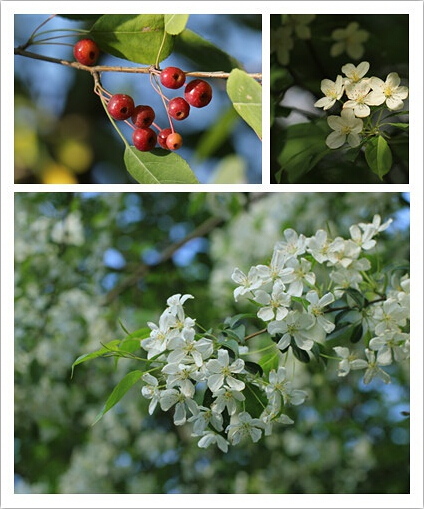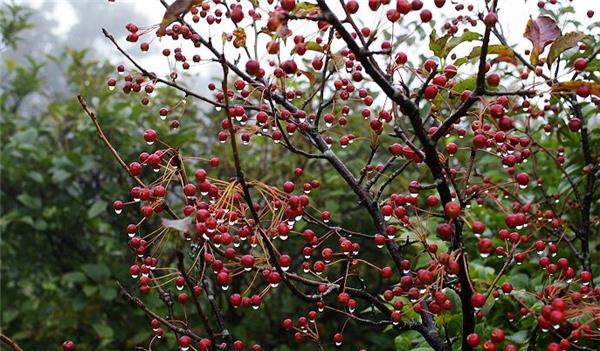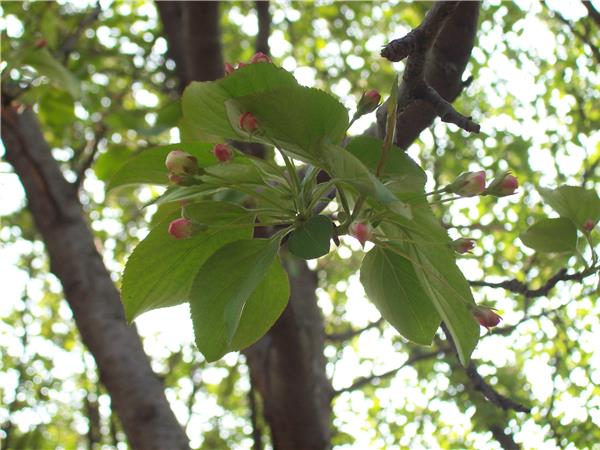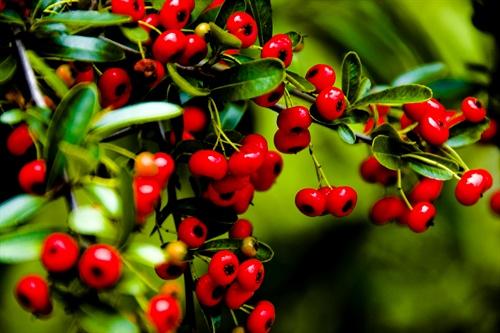Cultivation techniques of Vitex mandshurica Picture
Mountain bauhinia is actually very common in our life, that is, white-flowered begonia. I believe many people have been attracted by its flowers and fragrance. Today, the editor will introduce the cultivation techniques of Bauhinia mandshurica. Let's take a look.

Brief introduction of Bauhinia mandshurica
The bauhinia is a tree. Also known as Shan Ding Zi, Shan Ding Zi. The trunk is grayish brown, smooth and not easy to crack. New shoots yellowish brown, glabrous. Young shoots green with reddish brown, leaf blade oval, apex acuminate, base cuneate, leaf margin serrated and sharp. Umbels, flowers white, petals Obovate; fruit subglobose, red or yellow, stalk depression and calyx slightly sunken, sepals deciduous; florescence April-June, fruiting September-October. Like light, cold tolerance, drought tolerance, deep roots, long life. The bauhinia tree has the advantages of beautiful appearance, strong stress resistance, fast growth, large shade surface, spring flower and autumn fruit, which can be used as street tree or landscaping tree species. Shandingzi is the best raw material for making wine and preparing pure green drinks, and the bark can be used as a dye. Shanding tree is also a grafted plant for fruit trees.
Cultivation techniques of Bauhinia mandshurica
1. Stratification treatment of seeds.

To select the seeds newly collected in that year, the seeds are required to be full and the germination rate is more than 90%. The time of stratification treatment is generally from the end of November to the end of January. Before stratification, the seeds are soaked in clean water for 24 hours to fully absorb water. Then mix the soaked seeds with fine sand at the ratio of 1:5, keep the moisture in your hand and put it into a woven bag. Put it horizontally in the deep pit of 50cm in the shady place of ☆ forbidden ☆ outside, and it is better to bury the soil and the surface slightly convex.
2. Sowing and seedling stage management
The best sowing time is from March 20 to 30. Before sowing, make a seedling bed, turn it deeply and rake it flat, and make a 1.0m × 10m bed with a height of 10cm. Fill with enough water, mix 40% pentachloronitrobenzene powder and 65% Dysen zinc powder at 1:1, disinfect the bed, mix well with fine soil 4kg according to 8g/m2 dosage, and sprinkle on the bed surface. Spread the stratified seeds evenly on the bed with sand, then cover the seeds with 1:1 fine soil and fine sand, cover the soil with 0.5cm, and sow 100g/m2. Finally, the arch was supported by locust tree strips, and the common plastic film was covered with 1.2m wide. The seedlings began to be unearthed about 7 days after sowing, and the temperature was controlled to be no more than 30 ℃ in daytime and 12 ℃ at night to keep the soil warm and moist. The seedlings can be transplanted when they grow 6 leaves, which affects the growth of seedlings too late, and is even more disadvantageous to survival. 15-20 days before transplanting, pay attention to control watering and release air to refine seedlings. Seven days before planting, the plastic film was removed and 1000 times of the solution was sprayed once to control the blight. At the same time, foliar fertilizer was sprayed together to facilitate the growth of seedlings. Find weeds and set them out in time.

3. Open-field transplanting and subsequent management
The nursery land should choose the area of sandy loam or light clay loam with leeward and sunny terrain, flat terrain, convenient irrigation and drainage, and underground water level below 1mur1.5m, combined with deep soil preparation, applying organic fertilizer 3 000-5000kg/666.7m2, and then making ridges with row spacing of 60cm. The seedlings were planted on both sides of the ditch to form large ridges and double rows, and the plant spacing was 6-7cm. Immediately after planting, the seedlings were planted with soil and sealed ridges to slow down the seedlings. After that, the seedlings were irrigated or sprayed every 4 days or so to keep the soil from drying within 30 days. 10 days after transplanting, spray 1000 times of 50% carbendazim and 1000 times of carbendazim in time to control diseases and insect pests. It will be decided in the future according to the occurrence of diseases and insect pests. In addition, the seedling stage should also be timely weeding, loosening the soil, depending on the growth of the seedlings for a time soil topdressing or foliar fertilizer spraying.

Culture methods and matters needing attention of Bauhinia mandshurica
1. Watering and fertilizing. It is appropriate to keep the basin soil moist for watering. Drought and midsummer weather also need to spray water on the leaf surface and the ground, and increasing air humidity is beneficial to growth. Avoid stagnant water in the basin and get caught in the rain, otherwise the roots are easy to rot. In winter, the basin soil is slightly dry, spraying leaves and environment with clean water every 7 days, which not only increases humidity but also makes leaves clean. During the growth period, thin cake fertilizer and water were applied once every 10 days, and quick-acting phosphate fertilizer was applied in the bud stage. Pay attention to fertilization, do not splash fertilizer on the leaves; flowering and winter and summer should not be fertilized.
2. Light and temperature. The suitable temperature for the growth of Bauhinia mandshurica is 18-20 ℃, which has a well-ventilated and scattered light environment. Measures such as shading, ventilation and water spraying should be taken in high temperature season, and it is better to keep room temperature above 10 ℃ in winter, which can be placed in a place with plenty of sunshine. During the growing season, the family should be exposed to outdoor scattered light once or twice a week, and should be placed in a sunny shelter in winter.
3. Lashing and turning the basin. As the bauhinia plant is relatively tall, it is necessary to use thin bamboo and other things to set up support branches to prevent lodging. At the same time, every spring, we need to turn the basin, change the soil, prune and cut off the weak branches, overlapping branches and residual roots. For the plants that have flowered for 2-3 years, the plants that are too high should be truncated, leaving only 6-10 cm of the stem to germinate new branches.

The above content is the introduction of the pictures of the cultivation techniques of Bauhinia mandshurica, which is a famous flower appreciated by both elegant and popular people since ancient times. In the royal garden, it is often planted with magnolia, peony and sweet-scented osmanthus to form the artistic conception of "Yutang wealth". In addition, Vitex mandshurica can be resistant to sulfur dioxide, which is very suitable for the greening of urban streets and mining areas.
3. Lashing and turning the basin. As the bauhinia plant is relatively tall, it is necessary to use thin bamboo and other things to set up support branches to prevent lodging. At the same time, every spring, we need to turn the basin, change the soil, prune and cut off the weak branches, overlapping branches and residual roots. For the plants that have flowered for 2-3 years, the plants that are too high should be truncated, leaving only 6-10 cm of the stem to germinate new branches.

The above content is the introduction of the pictures of the cultivation techniques of Bauhinia mandshurica, which is a famous flower appreciated by both elegant and popular people since ancient times. In the royal garden, it is often planted with magnolia, peony and sweet-scented osmanthus to form the artistic conception of "Yutang wealth". In addition, Vitex mandshurica can be resistant to sulfur dioxide, which is very suitable for the greening of urban streets and mining areas.
Related
- Wuhan Hospital Iron Tree Blooming Result Was Instantly Frightened by the Gardener Master
- Which variety of camellia is the most fragrant and best? Which one do you like best?
- What is the small blue coat, the breeding methods and matters needing attention of the succulent plant
- Dormancy time and maintenance management of succulent plants during dormancy
- Minas succulent how to raise, Minas succulent plant pictures
- What are the varieties of winter succulent plants
- How to raise succulent plants in twelve rolls? let's take a look at some experience of breeding twelve rolls.
- Attention should be paid to water control for succulent plants during dormant period (winter and summer)
- Watering experience of twelve rolls of succulent plants
- Techniques for fertilizing succulent plants. An article will let you know how to fertilize succulent plants.



